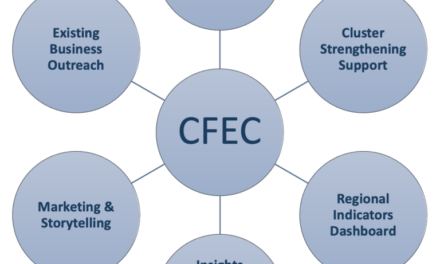Chuck Marohn, executive director of Strong Towns, was in Memphis earlier this year at the invitation of the Mayor’s Innovation Team to lay out his philosophy of smart urban investments and to gather information and insights for his report for Memphis.
“I intentionally approached Memphis as a blank slate,” he wrote in the report introduction. “Without exaggeration, I was blown away by the quality of place that is downtown Memphis and the neighborhoods that are directly adjacent to it. This was not what I was anticipating…
“Memphis suffers from the same central challenge on the periphery that most American cities have; sixty years of investment in a development pattern that is not financially viable. Fortunately, while Memphis has experienced significant horizontal expansion, it did not grow as robustly as other cities. This becomes a blessing today, because, now that we understand the bad economics of America’s suburban experiment, we see Memphis has proportionately less to fix than other similarly sized cities. There is reason for optimism today.”
The 17 pages that follow that set-up provide a contextual framework for anyone who cares about Memphis’ economic success, about smart and better investments that pay the best dividends, and about the kind of city that Memphis can be. We have written about all of these issues here before, but there’s nothing like a knowledgeable outside expert’s thoughts. Mr. Marohn’s strong report is about important issues like the MPO, infrastructure investments, economic growth, Elvis Presley Boulevard improvements and more.
It’s about how to make Memphis a strong town, and we offer this abridged version:
Financing the Suburban Experiment
“In the post-World War II pattern of development, new growth provides the short-term illusion of prosperity. As one example, consider a case where the highway department builds a new interchange. Businesses flock to the area. Those businesses pay for the infrastructure extensions and other public improvements needed to facilitate this growth. Residential developers pay to extend this infrastructure further to build homes. The local cost for the new infrastructure – the streets, sidewalks, sewers, etc. – is minimal, while concurrently the city is benefitting from the added fee revenue that comes with permitting and administering regulations.
“In exchange for this windfall today, the city agrees to take on the obligation to maintain all of these infrastructure systems indefinitely. Since that obligation won’t come due for decades, little consideration is given to the extent of this obligation, although in reality it is greater than the cumulative total of all the tax revenue expected to be received for its maintenance. Generally, this deficit actually increases the further away from the downtown and core neighborhoods the improvements extend.
“What Memphis and other cities across the United States have done is exchange the near-term cash benefits of new growth for the much greater long-term financial obligations of maintaining and serving these areas. The faster the city can grow, the more that illusion of wealth increases in the short-term and the greater the long-term obligations are. As things proceed, new growth is always needed to keep the system going. New infrastructure spending, particularly in highways, becomes the catalyst for that growth. Projects get bigger and riskier while the overall returns get smaller.
“Now that Memphis is more than two life cycles into this pattern of development, it has incurred significant debts and finds itself at the far end of a cycle of diminishing returns. Memphis literally does not have the financial resources to continue with this pattern of growth. It must consider alternative ways to generating prosperity.
Traditional Patterns of Development
“In the modern approach, we build the trolley line at tremendous cost and expect it to create new growth and investment. The traditional approach would have us first focus on getting the growth and investments in place that can support a trolley line, at which point its construction and operation will be logical, not artificial.
“To get growth and investments in place, the approach of the city needs to be more incremental, fine grained and experimental. Instead of single, multi-million dollar investment that is supposed to transform an area, the city needs to make more, small investments. These small experiments need to happen at the neighborhood level. They need to be focused on incrementally improving that space. These are opportunities to learn from successes and failures, with the best approaches spreading from neighborhood to neighborhood, informing the next round of improvements.
“Memphis needs to reach an understanding that its post-World War II horizontal expansion has created a long-term solvency problem. Even if it were desirable, continuing in this approach is simply not possible. The notion that somehow more “mega-projects” are needed to help Memphis “catch up” is not grounded in an understanding of the city’s economics.
Short-Term versus Long-Term Payoff
“While local government is called on to do many things, at the end of the day, the City of Memphis is essentially a corporation with assets, liabilities, and a roughly $700 million annual operating budget. Investments in roads, streets, sidewalks, sewer systems, water systems, transit and other municipal infrastructure is much like a company investing in equipment. We don’t make these investments just to create jobs but to generate sustained growth. While governments are not expected to make a profit, in order for infrastructure to be sustained, enough money needs to be returned to the city to offset the long-term bonds.
“This is not happening in Memphis, largely because the city has focused on projects and initiatives for their immediate, short-term benefits and has not adequately analyzed their long-term liabilities. Any city or business can look good in the short-term by robbing from their future prosperity to make the present appear more prosperous. It is much more difficult to create something that can generate sustained prosperity over a longer period of time.
Broad Avenue
“The transformation of Broad Avenue is a great case study from Memphis on how an incremental approach with only modest amounts of resources can be used to generate high rates of return. This low-cost, low-risk experiment produced results.
“While the City of Memphis spent no money on this project, many things were learned. First, there is a spatial problem with the design of the street. Second, there is unmet demand for products and services within the surrounding neighborhoods.
“There are dozens, probably hundreds, of areas similar to Broad Avenue within the City of Memphis. The level of investment they need to be reactivated is modest. The potential for high returns on those investments is great. These projects empower local neighborhoods, local entrepreneurs and help create a culture of shared prosperity, where slow and steady decline is not acceptable. These projects are well within the grasp of the City of Memphis and are low-risk, high-reward endeavors.
Metropolitan Planning Organization (MPO)
“The MPO is the single largest obstacle to positive change and reform that Memphis has to deal with. This is ironic because it is an organization that works on broad consensus, does not project much power and authority, and seems bureaucratically averse to controversy. The MPO holds the purse strings for billions of dollars, however, and that money that has been and is continuing to be used to reshape the Memphis region in a way that is destroying its long-term financial viability. This system needs immediate reform.
“Contrary to the current focus of the MPO, the Memphis region does not have a congestion problem. Congestion is a symptom of poor land use practices that give people no option but to utilize the hierarchical road network for every trip. Since money allocated to transportation projects through the MPO go predominantly to fighting congestion, it reinforces the existing hierarchical road network. Ultimately, that spending simple increases the congestion problem while moving it from one place to another.
“The Memphis region – and the City of Memphis in particular – would be better off receiving less financial support from the state and federal governments if that money could be used more flexibly to improve the region, as opposed to obtaining more money that requires perpetuating the current system of transportation and land use. Today, the MPO is wired to maximize the region’s share of federal and state transportation spending, regardless of the overall impact on the area. That approach needs to change to be more strategic in nature.
“The MPO needs to be reformed to give Memphis a greater voice. It also needs to either significantly diminish its role so that it is strictly in service of local planning and economic development initiatives or it needs to become more active and more collaborative in those efforts.
City Government Structure
When a project like the pending improvements to Elvis Presley Boulevard is brought into this system, it is given to the Division of City Engineering, along with Public Works, and their priorities – traffic flow, traffic safety, and maintaining the infrastructure – are given precedence. In fact, there is little, if any, consideration of ways to eliminate blight, revitalize neighborhoods, improve overall safety, or apply the city’s other priorities. And even when these priorities are applied, which take precedence?
The city of Memphis needs two things to make this system work today. First, it needs to break down the silos and hierarchies that segment knowledge within the city and prevent the best possible outcomes from surfacing. Second, it needs a universal set of values that will govern decision-making throughout the system.
Ultimately, city government should be reorganized geographically, with flexible teams in place to address the different needs of each distinct part of the city. This will help bring about a reorientation on neighborhoods and places instead of a focus on the individual division silos.
Part Six of the Series on Economic Growth. The second half of Part Six about Mr. Marohn’s report will be posted next.





MPO reform? right! get right on it.
mess with Lipscomb’s fiefdom? right! no problem.
Where can we get the full 17 pages?
Wow, analogous to the MCS problem, maximum state and federal funding for the most abysmal results.
Not news.
So the question is:
Is this a problem of city government’s paradigm being woefully out of touch with reality,
OR
the typical state and federal “cash grab” with no accountability for results, no oversight, and no watchdog to make sure money even makes it to where it’s supposed to go no matter how bad the plan is,
and
no one to even make sure the plan is anything but a bureaucracy to hide graft?
I’m glad the mayor is on top of this.
I hope that we can now get things done, presumably.
WHAT PLAN?
In my opinion, the above commenters are missing the point of Chuck Mahron’s analysis. Memphis is very like many American cities that have attempted to grow their way into prosperity via suburban sprawl. It does not work.
Sprawl has proven to be an economically unsustainable and inefficient way to use land. Mahron’s analysis shows that, like almost every American city, we have focused on spreading out rather than concentrating and intensifying our resources. The result is more and wider roads, longer sewers, and diluted fire and police protection. More importantly, larger lots with fewer buildings produce smaller tax revenues, forcing all of us to pay more for those unnecessary roads and sewers.
Therefore, sprawl takes money from all of us. It’s purely an economic issue that affects all of our wallets. We should all be concerned that it does not continue. That is why Mahron argues that as a total community, we must develop, prioritize, and implement more effective, efficient development policies. It is completely a matter of economic self-interest.
For a clearer explanation, visit the StrongTowns.org website and download their document called Curbside Chat.
Where can we find full report?
What process is being set up to translate report into action?
Is The Innovation Team able to initiate the reforms suggested?
The MPO is like the United Nations. Biggest member can’t control outcome. And even if Memphis could have stronger voice, the 2 state highway departments don’t listen anyway.
ditto. anyway, once the muni’s get their schools, memphis won’t have to worry about sprawl itself
Dear Anonymous 11:05, Why?
cause nobody will be building spec single family subdivisions in the memphis city limits.
Sorry, your explanation makes less sense to me than the original statement.